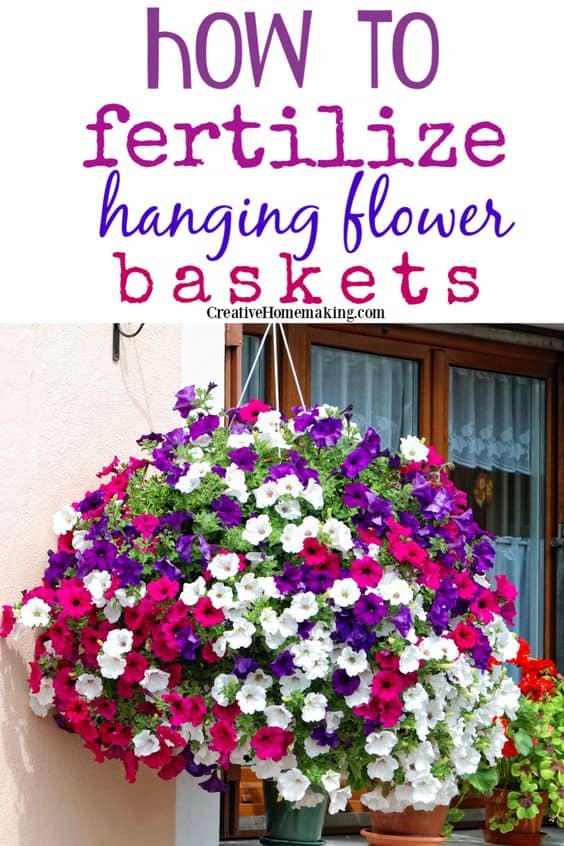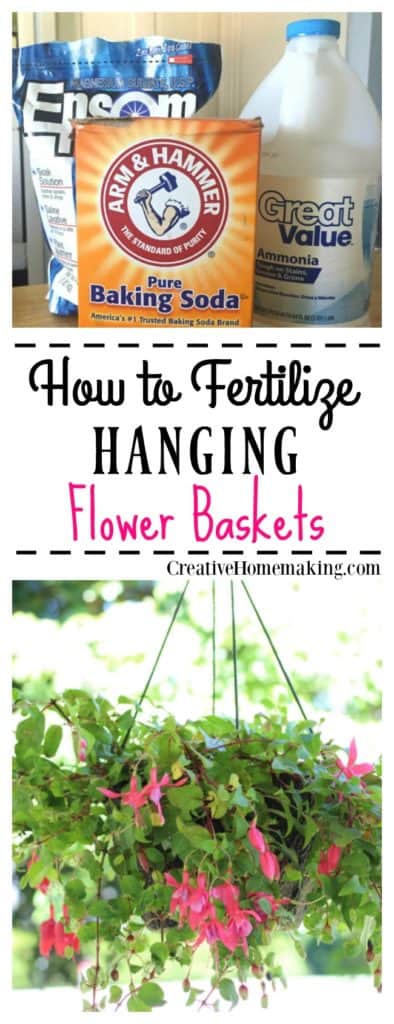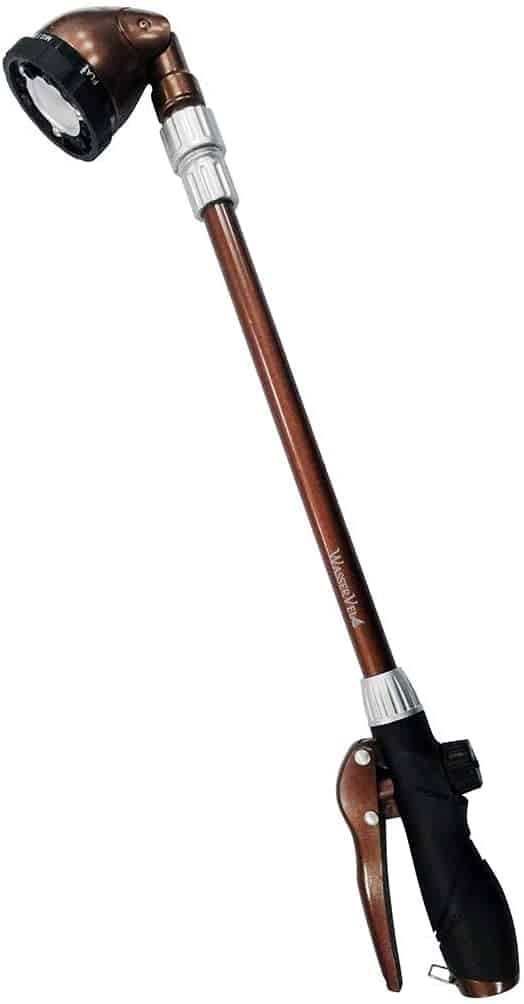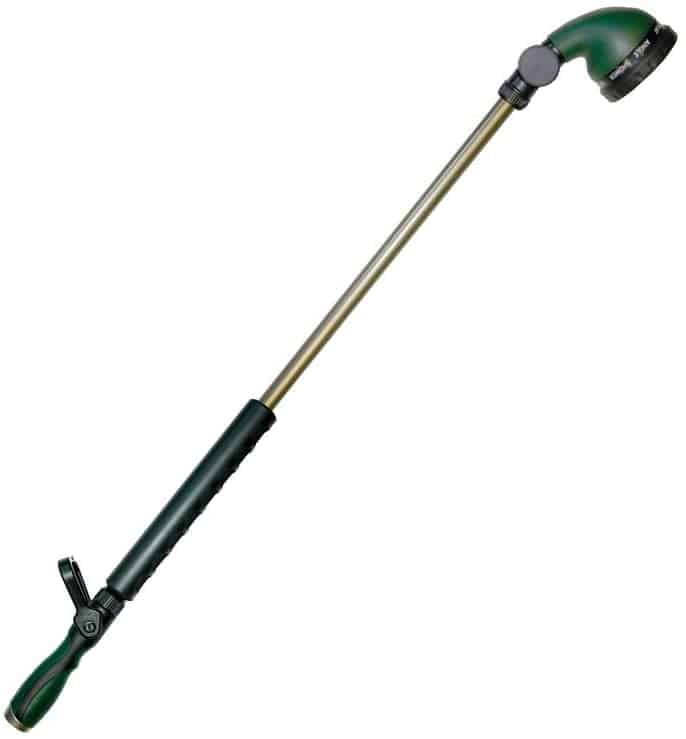Are you looking to add some color and life to your porch or patio? Hanging flower baskets are a great way to do just that. However, to keep your baskets healthy and blooming all season long, you need to provide them with the right nutrients. In this article, we will discuss the best way to fertilize hanging flower baskets and ensure that they remain healthy and vibrant throughout the season.
This post may contain affiliate links.
Plants need nutrients to grow, and hanging flower baskets are no exception. The biggest key to keeping your baskets healthy and blooming is to provide them with a slow and steady diet of nutrients. If you provide too little or no nutrients, your plants will run out of energy and die. But if you provide too much, the plant will spend all its energy growing roots and foliage, leaving little energy for blooming. So, it’s important to find the right balance when fertilizing your hanging baskets.
Related Article: Colors of Petunias: A Guide to Different Varieties

Choosing the Right Fertilizer
When it comes to fertilizing your hanging flower baskets, choosing the right fertilizer is crucial for the health and growth of your plants. There are various types of fertilizers available, each with its own benefits and drawbacks. Here are some factors to consider when choosing the right fertilizer for your hanging flower baskets:
Nutrients
The primary purpose of fertilizers is to provide nutrients to your plants. The three main nutrients that plants require are nitrogen, phosphorus, and potassium. Nitrogen promotes leaf growth, phosphorus supports root development, and potassium aids in flower and fruit production. When selecting a fertilizer, make sure it contains these three essential nutrients in the appropriate ratios.
Related Article: How to Hang Plants from the Ceiling
Type of Fertilizer
There are different types of fertilizers available, including slow-release granular fertilizer, liquid fertilizer, and compost. Slow-release granular fertilizers are ideal for busy gardeners who don’t have time to fertilize their plants frequently. Liquid fertilizers are quick-acting and are absorbed by plants faster than granular fertilizers. Compost is an excellent natural fertilizer that enriches the soil and provides nutrients to plants over time.
Organic vs. Synthetic Fertilizers
Organic fertilizers are made from natural materials such as compost, bone meal, and worm castings. They are environmentally friendly and provide a slow, steady release of nutrients to plants. Synthetic fertilizers, on the other hand, are made from chemicals and provide a quick boost of nutrients to plants. While synthetic fertilizers may produce faster results, they can harm the environment and may lead to nutrient imbalances in the soil.

Other Additives
In addition to the essential nutrients, some fertilizers contain other additives that can benefit your plants. Epsom salt, for example, is a great source of magnesium, which helps plants absorb nutrients. Baking soda can be used to raise the pH level of your soil, while ammonia can be used to lower it. Banana peels can be used to make a liquid fertilizer that is rich in potassium.
When to Fertilize Hanging Baskets
Fertilizing your hanging baskets is crucial to keep them blooming and healthy throughout the growing season. But when is the best time to fertilize your hanging baskets, and how often should you do it? Here’s what you need to know:
Timing
The timing of fertilization depends on the growing conditions and the type of fertilizer you’re using. In general, you should fertilize your hanging baskets once a month during the growing season, which typically starts in the spring and ends in the fall. However, if you’re using a slow-release fertilizer, you may only need to fertilize your baskets every two to three months.
Mid-Summer Boost
If your hanging baskets start to look tired or stop blooming in mid-summer, it may be time for a boost of fertilizer. You can use a liquid fertilizer to give your plants a quick energy boost and encourage them to keep blooming. However, be careful not to over-fertilize, as this can lead to burnt leaves and other issues.
Watering and Fertilizing
When you water your hanging baskets, you can also fertilize them at the same time. Use a water-soluble fertilizer and mix it with water according to the package instructions. Then, water your baskets with the fertilizer solution. This will ensure that your plants get the nutrients they need while also staying hydrated.
Related Article: How to Use Banana Peels to Fertilize Houseplants
Telescoping 25-36 Inches 6-Pattern Water Wand, Pistol Hose Nozzle, Front Trigger Sprayer, Soft Grip Front Trigger 10 Pattern Turret Wand with Ratcheting
Front Trigger 10 Pattern Turret Wand with Ratcheting
How to Fertilize Hanging Baskets
Fertilizing hanging baskets is essential to keep your plants healthy and blooming all season long. Here are some tips on how to fertilize your hanging baskets for optimal growth:
Related Article: How to Grow Geraniums in Containers
Use the Right Fertilizer for Hanging Baskets
Choosing the right fertilizer is crucial for the health of your hanging baskets. Slow-release granular fertilizers work well for hanging baskets, as they release nutrients in a low dose over a long period of time. You can add a slow-release granular fertilizer to the potting soil in your baskets every month to keep the soil supplied with a good supply of basic energy. Alternatively, you can use a two-prong approach of using a slow-release dry fertilizer once a month and a light liquid fertilizer every 10 to 14 days. This provides a steady but small dose of energy that keeps your plants energized without growing too fast.
Check Potting Soil Moisture and Drainage
Before fertilizing, make sure that your potting soil is moist but not waterlogged. Overwatering can lead to root rot and other plant diseases. If your potting soil feels dry, water your hanging baskets thoroughly before fertilizing. Also, ensure that your baskets have proper drainage to prevent water from accumulating in the soil.
Use a Telescoping Water Wand to Dilute Fertilizer
When fertilizing your hanging baskets, it is essential to dilute the fertilizer to avoid burning the roots of your plants. A telescoping water wand is a useful tool to help you dilute the fertilizer. Fill a watering can with water, add the recommended amount of fertilizer, and mix well. Then, use the telescoping water wand to apply the diluted fertilizer to the soil in your hanging baskets.

Look for NPK Ratios
When choosing a fertilizer for your hanging baskets, look for one with a balanced NPK ratio. NPK stands for nitrogen, phosphorus, and potassium, which are the three primary nutrients that plants need to grow. A balanced NPK ratio ensures that your plants get the nutrients they need to thrive.
Related Article: Using Epsom Salt to Fertilize Houseplants
Tips for Fertilizing Hanging Baskets
When it comes to fertilizing hanging baskets, there are a few things to keep in mind to ensure your plants stay healthy and blooming all season long. Here are some tips to help you get the most out of your hanging baskets:
Consider the Light and Location
Before you start fertilizing your hanging baskets, it’s important to consider the amount of light and shade they receive. Hanging baskets that are in full sun will require more frequent fertilization than those in partial shade. Similarly, if your hanging baskets are located in an outdoor space with a lot of wind or stress, they will also require more frequent fertilization.
Related Article: 6 Natural Fertilizers for Indoor Plants
Choose the Right Fertilizer
When selecting a fertilizer for your hanging basket plants, it’s important to choose one that meets their specific requirements. Look for a slow-release fertilizer that provides a steady diet of nutrients over time. Avoid using too much fertilizer, as this can cause your plants to become root bound quickly.
Use a Self-Watering Hanging Basket
If you’re looking for an easy way to fertilize your hanging baskets, consider using a self-watering hanging basket. These baskets have a reservoir at the bottom that holds water and fertilizer, which is then slowly released to the plants over time. This ensures that your plants receive a steady diet of nutrients without the need for frequent fertilization.
Fertilizing Different Types of Hanging Basket Plants
When it comes to fertilizing hanging basket plants, it’s important to understand that different types of plants have different nutrient requirements. Here’s how to fertilize some common types of hanging basket plants:
Petunias
Petunias are heavy feeders, meaning they require a lot of nutrients to grow and bloom strong. To fertilize petunias, you can use a balanced fertilizer with equal amounts of nitrogen, phosphorus, and potassium (NPK). Apply the fertilizer once every two weeks to keep your petunias blooming strong.
Geraniums
Geraniums also require a lot of nutrients to grow and bloom well. To fertilize geraniums, you can use a balanced fertilizer with a slightly higher concentration of phosphorus (the middle number in the NPK ratio) to promote flowering. Apply the fertilizer every two weeks during the growing season.
Related Article: How to Get Rid of Gnats in House Plants
Impatiens
Impatiens are another type of heavy feeder that requires regular fertilization to keep blooming strong. Use a balanced fertilizer with a slightly higher concentration of nitrogen (the first number in the NPK ratio) to promote foliage growth. Apply the fertilizer every two weeks during the growing season.
Flowering Annuals
If you have a hanging basket with a mix of flowering annuals, you can use a general-purpose fertilizer with a balanced NPK ratio. Apply the fertilizer every two weeks during the growing season to promote healthy growth and abundant blooms.
Foliage Plants
If your hanging basket contains mostly foliage plants, you can use a fertilizer with a higher concentration of nitrogen to promote leaf growth. Apply the fertilizer every four to six weeks during the growing season.
Stems and New Blooms
To promote stem growth and encourage new blooms, you can use a fertilizer with a higher concentration of phosphorus. Apply the fertilizer every two weeks during the growing season.
Remember to always follow the instructions on the fertilizer package and never over-fertilize your plants, as this can lead to burned roots and other problems. With the right fertilizer and regular application, your hanging basket plants will thrive and bloom beautifully all season long.
Fertilizing your hanging flower baskets is an essential task that will help your plants thrive and produce stunning blooms all season long. By following the right fertilizing techniques, you can ensure that your plants get the nutrients they need to grow healthy and strong.
Frequently Asked Questions
Can I use Miracle Grow on hanging baskets?
Yes, you can use Miracle Grow on hanging baskets. Miracle Grow is a popular water-soluble fertilizer that can provide the necessary nutrients for your plants. However, it’s important to follow the instructions on the package and not to over-fertilize, as this can harm the plants.
Related Article: Homemade African Violet Fertilizer
When should I feed hanging baskets?
You should feed hanging baskets every two to three weeks during the growing season. This will provide the necessary nutrients for your plants to grow and bloom. It’s important to follow the instructions on the fertilizer package and not to over-fertilize, as this can harm the plants.
What is the best fertilizer for petunia hanging baskets?
The best fertilizer for petunia hanging baskets is a balanced fertilizer with equal amounts of nitrogen, phosphorus, and potassium. Look for a fertilizer with an N-P-K ratio of 10-10-10 or 20-20-20. It’s important to follow the instructions on the fertilizer package and not to over-fertilize, as this can harm the plants.
What is the best slow release fertilizer for hanging baskets?
The best slow release fertilizer for hanging baskets is one that provides a balanced mix of nutrients over a long period of time. Look for a fertilizer with an N-P-K ratio of 14-14-14 or 16-16-16.
Follow my gardening board on Pinterest.





